
You might have heard about the remarkable wines from the sunny Republic of Moldova, conquering the world with their fresh style, but there is nothing better than a nice sip to tell you the amazing story of “Wine of Moldova”. Wine lovers who would like to know more about the new generation of wines from this exciting new region of Europe are invited to discover the legendary “Wine of Moldova”, a wine of change. Rooted in its astonishingly rich history, but equally fresh and modern, Wine of Moldova is ready to conquer the big wine world, holding up to this credo: “Crafted by generations of winemakers in the largest cellars in the world, for it to be appreciated by consumers in both East and West and supported by legends anyone can embrace.”
“Wine of Moldova” is the brand adopted by the Republic of Moldova, to unite all the country’s wine producers, and it has already won its place on the tables and in the hearts of many international wine lovers. The white stork is the symbol of the Moldovan wine industry, being supported by many local legends as a symbol of the continual revival of Moldova. “Wine of Moldova” is the tangible result of the decision by the Republic of Moldova to reform its wine sector and to focus on quality and performance. In 2013, the National Office for Vine and Wine (ONVV) was established and charged with the responsibility of implementing a range of programs to support market diversification and the growth in exports of quality wines. With a system, based on the EU model of protected geographical indications – PGIs – covering the four growing areas of Valul lui Traian, Stefan Voda, Codru and Divin, Moldova has made impressive progress in upgrading the quality of its wines over the last five years. Proof of this is offered by the over 420 medals won at such prestigious international contests as: Decanter World Wine Awards, Mundus Vini, Concours Mondial du Bruxelles, International Wine Challenge, etc.
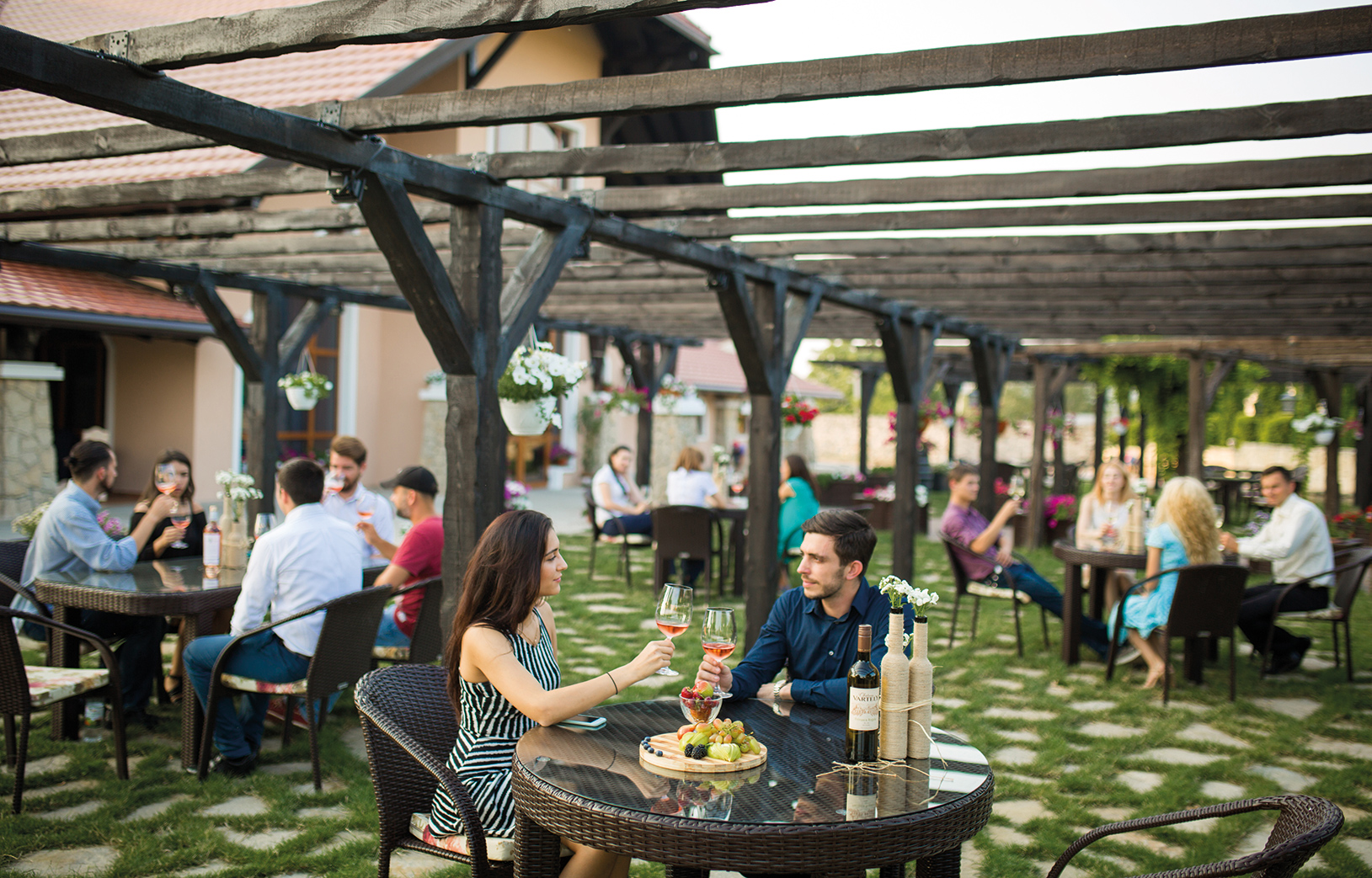
ONVV is responsible for the promotion of Moldovan wines on export markets, under the umbrella of Wine of Moldova country brand, representing the new generation of wines, sourced out of millennial traditions and inspired by new trends in modern winemaking technology. The national wine brand also serves as a quality mark for consumers in products that have undergone rigorous quality control procedures.
As Gheorghe Arpentin, director of the National Office for Vine and Wine said “Recognition for Moldovan wine internationally is growing and so is demand among foreign consumers. The volume of exports has grown, but our greatest achievement has been in managing to increase their value, which indicates the readiness of foreign markets to appreciate greater quality. Even so, we have managed to maintain extremely competitive prices for Wine of Moldova.”
Due to the largest density of vineyards in the world, located on the same latitude as other famous wine regions, such as Bordeaux, and with a climate close to that of Burgundy, Moldova is able to propose exquisite wines for the most demanding consumer. The country has combined local and international grape varieties, and blends of both with local terroir and the skills of generations of winemakers to gain a global reputation as a producer of unique, characterful premium wines.
International wine experts, who are increasingly keen to visit Moldova to discover its wines, agree that Moldova resembles a New World country in its openness of approach, and that it is distinguished on the international market by the authentic wines made from its fascinating local varieties. The authenticity and uniqueness of Moldovan wines are shaped by indigenous varieties, which represent 10% of all area under vines: Feteasca Alba, Feteasca Regala, Feteasca Neagra, Rara Neagra, etc.
Feteasca Alba is a vine that grows in this region for centuries. The wines, produced from Feteasca Alba are known for their exquisiteness, floral aromas, lightness, and freshness. Because of natural mating with Furmint stains, another native variety was created: Feteasca Regala.
Feteasca Neagra – more than 2000 years of history, which began in Moldova, in the valley of the Prut river. The wine obtained from Feteasca Neagra has a distinctive rich bouquet full of berry and cherry flavors, and a long, fruity aftertaste.
Rara Neagra is a variety cultivated since the times of the Dacians, and it has been absorbing the sun of mellow Moldovan hills for all these centuries. This gives Rara Neagra wines their fresh tones, soft taste with notes of dried fruits and vanilla.
Many people are unaware that wine-growing in this small country, dates back more than 3,000 years to the time of the Dacians. Perhaps it is no coincidence that Moldova’s outline looks like a bunch of grapes, as wine plays a major role in the lives of its approximately 3m inhabitants.
The family-owned winery was founded in 1994. They planted over 500 hectares over the course of 10 years. All of their vineyards are located in the vicinity of the Geamana village, in the county of Anenii Noi. Currently they produce approximately 3 million bottles per year with the project to rise up to 6 million within the next 2 years.
The wines are crafted with French varietals such as Cabernet Sauvignon, Merlot, Chardonnay, Sauvignon Blanc and Muscat. But they have also planted other varietals such as Riesling, Malbec, Pinot Noir and of course the two local varietals of Feteasca Alba and Feteasca Neagra.
The red wines are full bodied and aged in 225 liter oak barrels or on oak staves—mostly American, Hungarian and to a lesser extent French oak. The white wines are usually in the fresh and aromatic style except some of the Chardonnays and Rieslings which are fermented or aged in oak barrels as well.
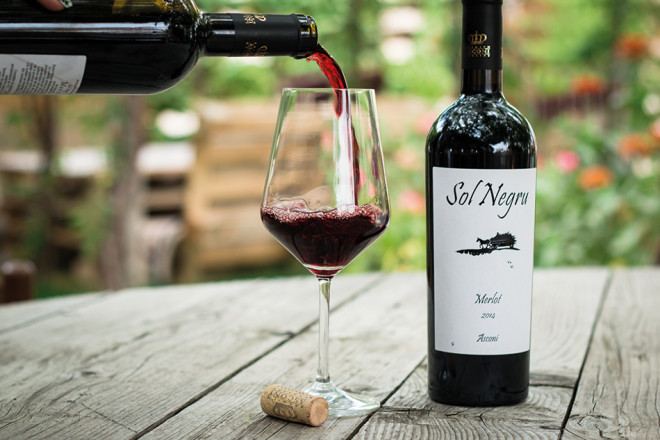
The winery’s export business started with shipments only to Russia. However after the embargo in 2006, we stopped and started looking for new markets. Now Asconi Winery is represented in over 25 countries such as Czech Republic, Slovakia, Poland, UK, USA, China, Nigeria, Kenya, Tanzania, Japan, Lithuania, Serbia, Australia and many others.
Hospitality was always a passion for the family, which led them to start developing the tourism at the winery, between tradition and new trends. They organize tours of the winery and tastings. In addition, they have two restaurants which serve traditional Moldovan dishes and Balkan favorites paired with Asconi wines, using family recipes and ingredients produced on the estate!
By summer 2019 they will open 12 traditional style cottages, 20 rooms in total, with traditonal artisanal reed thatched roofs. Future projects also include an outdoor terrace, 3 pools, an exclusive cellar tasting room, a separate event space and many more.
Made from selected grapes and by traditional method. Matured in French, American and Hungarian barrels to provide a complex harmony both in taste and aroma. A ruby color with pomegranate tones. Complex aroma of dried berries and plums. A soft and velvety taste with a perfect balance of sweet tannins and vanilla and chocolate flavors. A long aftertaste with fine oak nuances.
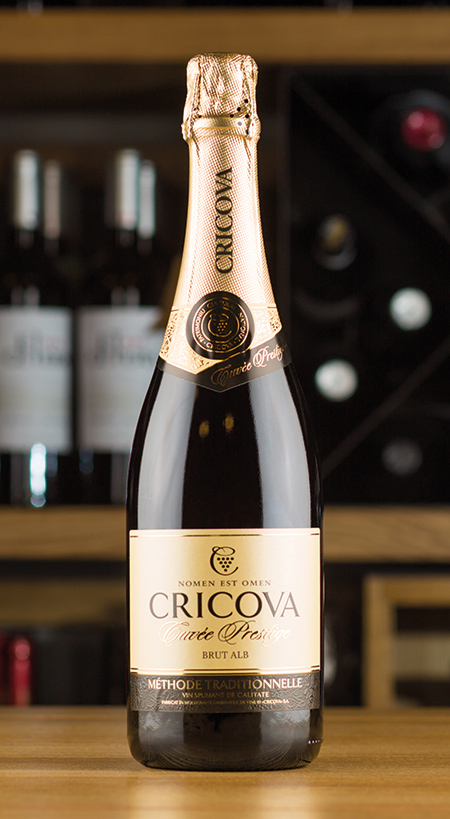
The history of the “Cricova” Associated Wine Factory began in 1952. There was a shortage of facilities for the storage and ageing of wines at that time in the Republic of Moldova. Following long searches, two outstanding personalities of Moldovan winemaking, Petru Ungureanu and Nicolae Sobolev, suggested to use the galleries resulting from building stone extraction as warehouses for the storage of wine. “Cricova” has thus become a unique underground complex that got renowned throughout the world for both its huge labyrinths and its excellent wines.
“Cricova” is the first Moldovan company that manufactures sparkling wine by the method of the famous monk Dom Perignon – “Méthode Traditionelle”, i.e. secondary fermentation in the glass and subsequent cuvée ageing. The company’s range of products is outstanding in terms of both quality and diversity. Today, one can state with certainty that one of the most remarkable products offered by the Cricova Associated Wine Factory is the classic sparkling wine – a noble and extravagant sparkling wine.
Furthermore, “Cricova” manufactures sparkling wines obtained by secondary fermentation in stainless steel reservoirs, and the resulting sparkling wine possesses a full fruity taste and freshness. This method enables the preservation of all qualities of a re-fermented wine.
The “Cricova” Associated Wine Factory has asserted itself due to its continuous innovation trend. The company applies the world’s most sophisticated technologies in winemaking, possesses the art of manufacturing diverse wines and meets the finest tastes and requirements of the market. It is the first and only company awarded the highest state distinction, the Order of the Republic. By virtue of the Law of the Parliament of the Republic of Moldova, the “Cricova” Associated Wine Factory has been declared the National Cultural Heritage.
White sparkling manufactured in compliance with the French classic Champagne method by secondary fermentation in the bottle with subsequent cuvée aging for at least 3 years in the famous Cricova wine cellars. The blend of classic European grape varieties Chardonnay and Pinot Noir renders the wine elegance and subtlety. Visual aspect: vibrant straw-yellow. Nose: green apples, toasted bread, almonds. Palate: a long aftertaste, velvety, elegant and refreshing.

he Fautor family company was founded at the end of the 20th century. It all began with the purchase of a small winery. Gradually the vine was planted. After analyzing the terroir and the microclimate, native varieties were planted, but also less common ones such as Tempranillo, Albarino, Syrah, Pino Grigio, Rhein Riesling. Today the Fautor vineyards extend over an area of approx. 350 ha. Both the winery and the plantations are located in the absolutely unique Tigheci micro zone, part of the Valu lui Traian wine region in the South of Moldova.
The special terroir of the Fautor vineyards is created by Codrii (old woods), Tigheci Hills and Prut Terraces, and their altitude is the highest in southern Moldova. The implementation of advanced European technologies (French and Italian) combined with local traditions and recipes have allowed them to create unique wines.
FAUTOR Winery has a large portfolio with five ranges: Illustro, Limited Edition, *310 Altitudine, Dessert Wines and latest one is Aurore launched at the end of summer 2018.
At the moment, in the Limited Edition range, NEGRE is perhaps the most representative wine of Republic of Moldova. Produced in two local varieties with a suggestive name, easily perceptible to the foreign consumer, bottled in a premium bottle, with an interesting label and legend in background. A wine of character that combines the elegance of the Rara Neagră and the finesse of the Feteasca Neagră. The aroma is dominated by bitter cherries, cherries, blackberries and blueberries. Matured in new oak barrels for 6 months, spiced and velvety.
Another achievement in Fautor’s Limited Edition range is the Fume Blanc 2016. The 2016 Fume Blanc was aged for six months in new French oak. With an excellent balance, it remains fresh and vibrant, with all of those grassy nuances on the nose, but it never becomes too vegetal. The textured finish is caressing, and the fruit lingers beautifully. It has reasonable concentration.
The quality of wines is appreciated worldwide and in 2017 Fautor was the most awarded winery in Moldova.
The first chapter in the history of Tiganca Winery dates back the first half of the eighteenth century, when two brothers of Greek origin, attracted by the unique character of the region, bought several vineyards and set up a small winery in the village of Tiganca.
The year 1999 can be considered a new beginning for Tiganca Winery. The winery became the property of the Dulgher family who made major efforts to re-equip the plant, renovate the cellars, provide it with oak barrels and, of course, establish new plantations. Step by step, the traditional winemaking practices were combined with modern technology and from 2011 the wines were bottled under the Gitana trademark and exported to Europe, USA and Asia.
Tiganca Winery is settled in the wine region Valul lui Traian, in the region of Leova. At the moment, the TigancaWinery has 360 ha, but is continuously developing.
For those who work at Gitana, winemaking is not just a job, is an art and a lifestyle. They work each day with passion and love. The Gitana wines are the result of a harmonious blending of traditional technology with modern vinification processes. This philosophy brings out the perfect quality of wine they produce. Production begins with the manual harvesting of the grapes. The appropriate picking period is determined only after careful examination of the signs of maturity.
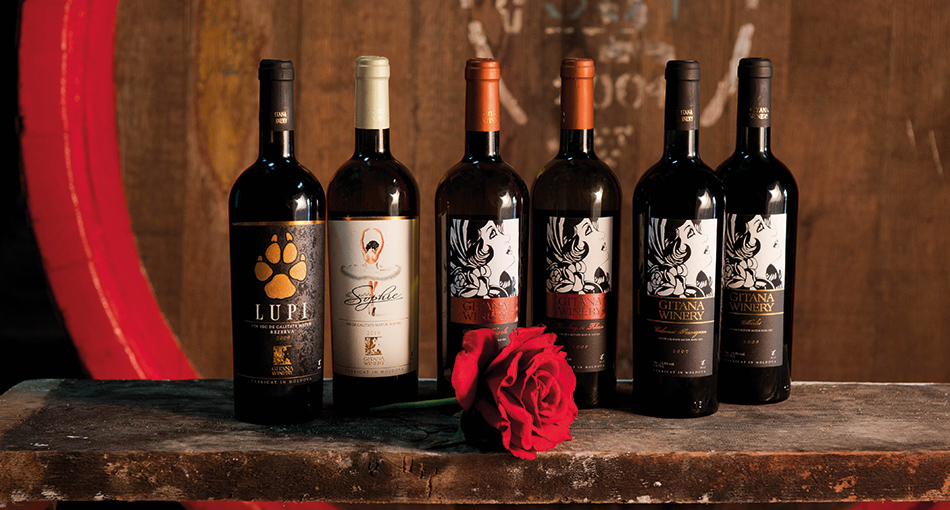
Visuel aspect: intense ruby red color. Nose: the bouquet is intense, rich, with hints of mixed berries with vanilla, as well as shades of chocolate, coffee beans, and licorice. Taste: vigorous and robust, well-structured, full-bodied and well-balanced. An intense and complex taste with powerful tannins, and a lingering aftertaste that amplifies its elegance. Fat with marked aromas of black fruit, ripe plum, cassis and blackberry.
Milestii Mici was founded in 1969 and is specialized in making collection wines, high quality wines, table wines and sparkling wines. Milestii Mici's wine production is well known in many countries all over the world and is appreciated at a high level by wine specialists with great reputation.
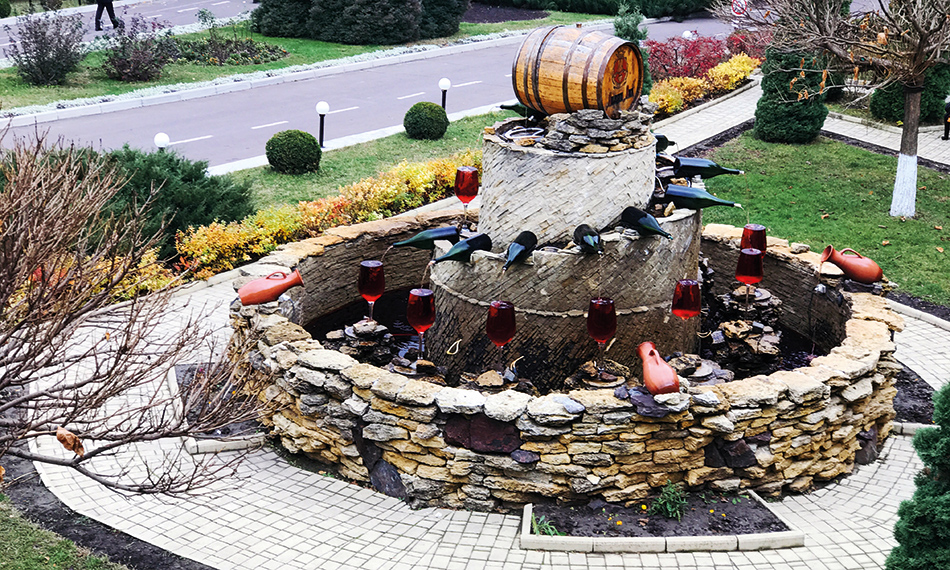
Milestii Mici's underground cellars and winery is one of the most important tourist spot in Moldova and attracts over 20,000 visitors from all over the world every year and was included in the Guinness World Records in 2005 for the largest wine collection in the world, exceeding 1.5 million bottles. Also named as the Golden Collection, it includes many unique Moldovan wines starting from the 1969 vintage. The galleries of Milestii Mici are the longest in the world stretching for over 200 kilometers. The guests of the cellar have the chance to walk through the underground avenues and streets that bear the names of grape varieties and are large enough to be driven by car. After unveiling the beauty of the cellars, guests are invited to the tasting halls to enjoy exquisite wines and traditional dishes such as: sarmale and mamaliga with goat cheese and meat stew.
Milestii Mici is a place where you are always welcome!
Castel MIMI was established in 1893 by Constantin Mimi, the last governor of Bessarabia, and today is the only authentic wine chateau in Moldova. The winery is included in the national patrimony and has been listed among the Top 15 of the most beautiful architectural masterpieces of the wine world.
The wines from Bulboaca are recognized as some of the best you can try in Moldova, starting from the end of XIXth century. After its foundation, the chateau has been visited by heads of state and members of several royal families. The domains and the wines were highly appreciated by the Tsar of the Russian Empire Nicholas II in 1914, by the heir of Romanian Throne Prince Carol II, and by the Crown Princess of Denmark Mary in 2016.
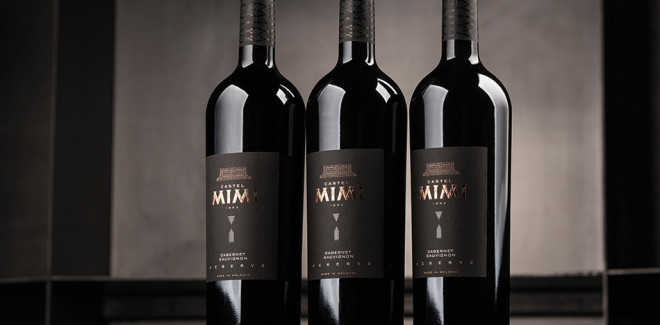
The first ever international medal for wines produced at this chateau was awarded in 1911, more specifically silver at the International Agriculture and Science Fair of Turin, Italy. The story still continues successfully today as Castel MIMI wines gathered several medals in recent years at the most important competitions world wide, the last ones being gold medals at the International Wine Contest Bucharest 2018 for Castel MIMI’s Malbec 2015 and Rosu de Bulboaca 2015 that became the best-seller of the winery, located 38 km from Chisinau, the capital city of Moldova.
The tradition and innovation at Castel MIMI are perfectly fused together in order to create excellent wines that, combined with other elements, such as gastronomy, tours, luxury accomodations and gorgeous views, make of Castel MIMI an outstanding destination you must visit and savor.
Cabernet Sauvignon is an attractive and fine wine that debuts with strong aromas of smooth grapes, cherries and sour cherries. In the aftertaste the wines will blossom with notes of oak and pepper. The sweet-bitter tannins, carefully crafted by the winemakers, create a unique and fascinating texture.
Located in the heart of the Codru woods of the Republic of Moldova, about 30 km away from the capital of the country, in an ecologically sound area, Vinaria Poiana undeniably represents a unique combination of taste, refinement and flavor, having its own history and rich tradition, and the people who love what they do and who keep their localities personality.
The winery's vineyard is located in the area bounded by the 'Eco Areal' zone, where the vine is cultivated without the use of pesticides or chemical fertilizers. The wine is created with much passion, and its secret is in the grapes collected by the team manually, bunch by bunch.
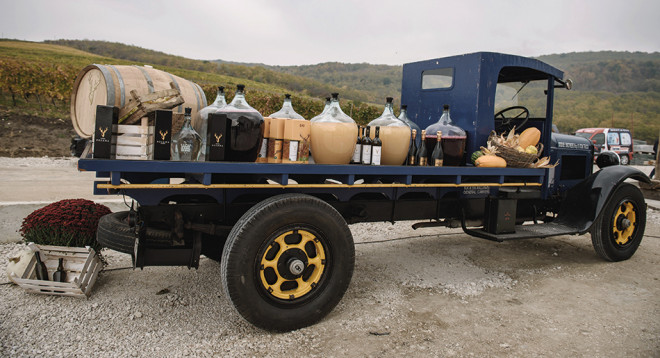
At the moment, on 25 hectares of vineyards, Vinaria Poiana cultivates new grape varieties: three red varieties – Feteasca Neagra, Merlot and Cabernet Sauvignon, and six white varieties – Feteasca Alba, Feteasca Regala, Busuioaca, Tamaioasa, Traminer and Pinot Gris.
Once having stepped the threshold of Vinaria Poiana the guests are impressed by the view, the place and especially by the wines & sparkling wines tasted, which are created with individuality and guaranteed quality, taste and passion, giving them unforgettable memories and making them come back to this small corner of paradise, to enjoy the sunset with indescribable and unique view.
In the wines collection of Vinaria Poiana you will find various types of wine: dry, semi-dry, white, red and rose, to fit every guest's taste.
“Poiana Rose is made of Cabernet Sauvignon, beautifully expressed through the flavors of fruits and wild berries, with a balanced, harmonious and very pleasant taste. It is impressive by its freshness, flavor and color.” - Boris Gaina, the scientist and specialist in the field of oenology and technology of alcoholic and non-alcoholic beverages of the Republic of Moldova.
The oldest winery in Moldova, the prestigious Château Purcari has a long history in producing some of the most renowned wines in the country. It is located in the south-east of the Republic of Moldova, in the village of Purcari, in the district of Ştefan Voda. In 1827, Russian Emperor Nicholas Ist signed a special decree appointing Purcari as the first official winery in Bessarabia. Over the years, Purcari has become a supplier of the British royal family and also the official supplier of the Romanian royal family, until today.
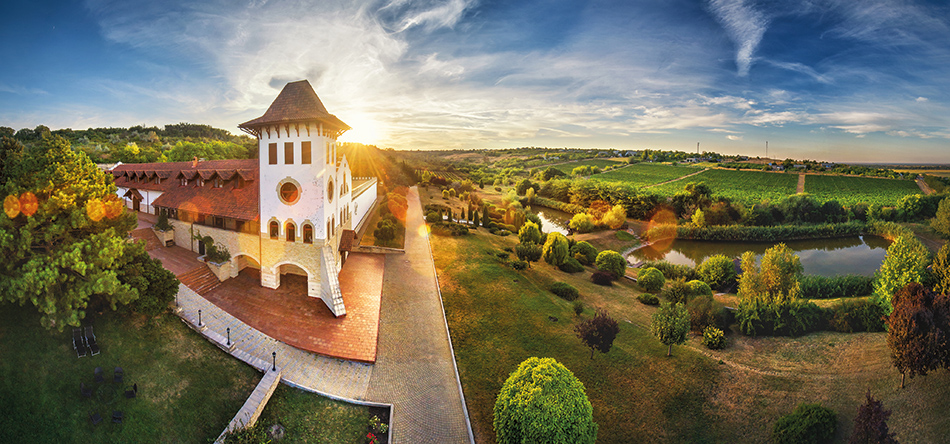
Since 2016, Purcari has written a new page in its history. The chateau launches a range of sparkling wines "Cuvée de Purcari" which has won in 2018 already more than 20 medals at the most prestigious international competitions. The Cuvées - Blanc Brut, Blanc Extra Brut and Rosé - were created by French oenologist Jérôme Barret in strict respect of the traditional French method.
“The "Cuvée de PURCARI" collection is the Moldovan continuity of my quest for excellence inspired by my region of origin, Champagne. The ultimate desire for these wines is to combine elegance and balance with the finesse of the bubbles. It is a blend of Chardonnay, Pinot Noir and Pinot Blanc that scrupulously respects the key stages of Champagne vinification. It is the result of our common passion with the owner of Purcari and the demand for quality and excellence that the estate always tries to create in all its wines,” said Jérôme Barret.
In 2018, Purcari launched two new references–Fetească Albă, which is a 100% autochthonous varietal–and Grande Cuvée de Purcari, which matured for 18 months in bottles.
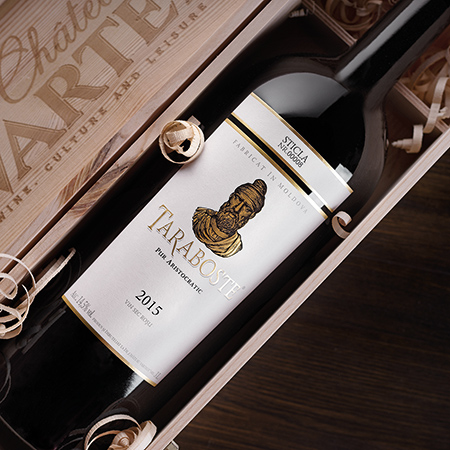
Château Vartely is a fairly young winery from Moldova that has managed in a short period of time to become a company emblematic of its country.
From the winemaker’s perspective, Château Vartely is a company that combines the latest grape growing and processing technologies with passion for producing quality wine.
Its own vineyards in the regions of Codru and Valul lui Traian ensure high quality of the wines created. The microclimate in these areas allows producing unique wines. Wines produced from European and domestic varieties have made Château Vartely one of the most popular companies among consumers.
The excellence and prominent quality of Château Vartely wines has been recognized through medals and honors awarded at the most prestigious international competitions.
Château Vartely was founded in 1996, but the first wines under this brand appeared in 2004 and soon became a major influence on the domestic and international wine market. The author of the wines is Arcadie Foșnea, one of the most professional and talented oenologists from Moldova.
Out of the same respect for tradition and authenticity, in 2008 Château Vartely opened a tourist complex located only 45 kilometers from Chisinau. Here, you can enjoy tours and tastings with professional guides. After a professional tasting, guests can enjoy delicious food cooked at the restaurant, and, if they wish, they can continue their stay, choosing accommodation in one of the 3 tourist villas.
The Taraboste Red 2015 is a blend wine that is made up in a 70/30 ratio of Cabernet Sauvignon and Merlot. “The grapes used to make the Taraboste wines are handpicked when they are fully ripened”, Valentin Vranceanu, the head of the production says. “The grapes accumulate high amounts of sugars, this is why the wines have high alcohol percentage – 14.5 %. The two components of the wine blend are kept separately in new oak barrels for 18 months”. It is a wine with an enhanced bouquet of ripe pomegranates with elegant breaths of blackcurrant and oriental spices. Intense and, at the same time, velvety taste on tannins background reminds dried prunes and bitter cherries.
This wine was awarded with Gold medal at Mundus Vini and Silver medal at Decanter.
Vinuri de Comrat is situated in the South of Moldova in Comrat, the capital of the autonomous territory of Gagauzia. A village named Comrat appeared in the end of XVIII century on the river Jalpug during the period of Ottoman Rule. According to one of the legends its name comes from two Turkish words “comur-at”, which means “black horse”. A long time ago, horse trading and races were organized there. One day a black horse belonging to a local Turkish pasha won the race. In honour of this victory the new village was called “Comur-at”. Later the name was transformed to Comrat.
Today Vinuri de Comrat is a modern processing complex for the production and processing of grape (capacity of 4000 tons), the production and bottling of dry, semi-sweet, dessert, selected and vintage wines, wine spirits, using modern innovative technologies. The winery employs 160 persons.
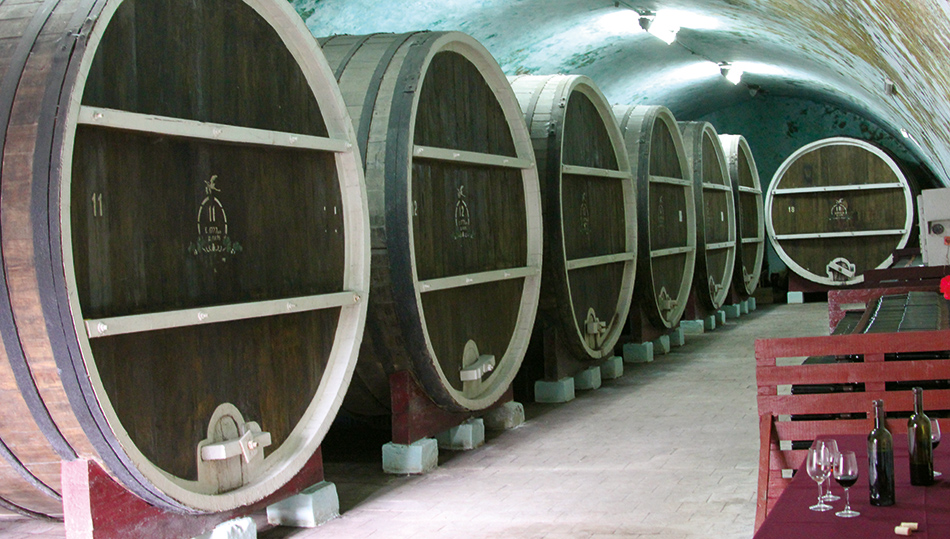
The geography of today's exports has been quite extensive including Poland, Czech Republic, Romania, Slovakia, Latvia, Lithuania, Estonia, Japan, China, Russia, Kazakhstan, Belorussia, Ukraine, and Uzbekistan.
Their porfolio includes more than 50 collections of wine, among them well-known brands such as Plai Moldova. The iconic wine of Vinuri de Comrat is Plai Merlot Syrah, made from selected grapes of Merlot and Syrah, harvest 2015, cultivated in the South of Moldova, an ideal region for producing red wines. The wine is maturated for 6 months in French barriques. Plai Merlot Syrah displays an elegant ruby-red color. Its fruity bouquet is completed by notes of blackcurrant with slight hints of plum and black cherry.
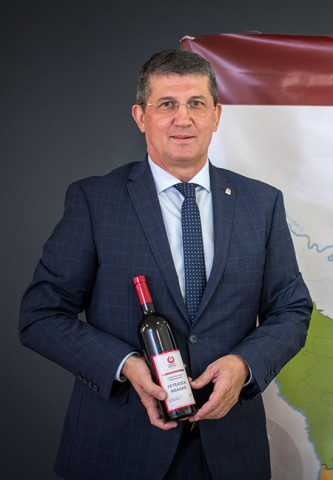
Moldovan wines have a very ancient history of more than 7000 years. What was the place of wine in the local culture before the opening of Moldova to the international market?
Every Moldovan family makes their wine. It is consumed from autumn to Easter and shared with neighbors and friends. It is the national drink since the origin of the country. Viticulture and the art of wine have been traditional occupations for Moldavians for about 7,000 years.
Today, the wine sector is the first job creator in rural areas; 1 out of 4 people are employed directly or indirectly in this industry.
What are the specificities and assets that distinguish the wines of Moldova?
For white wines, the indigenous varieties Feteasca Alba and Feteasca Regala appear to be best adapted to the continental climate and the grey soils of the Codru delimited geographical area. The wines obtained in this terroir are characterized by dominant aromas of the vine blossom, linden flower, acacia, wild flowers, hay, apricot, blackberry, citrus fruits.
For the red wines, the main indigenous variety is Rara Neagra, also called Babeasca Neagra. Vinified in varietal wines, it gives a wine style with red fruits, cherry, raspberry, prune and an elegant note of violet, light and delicate, with soft tannins and rich on the palate. Another local red grape is Feteasca Neagra, of very ancient origin, in full revival.
Sparkling wines and liqueur wines should not be neglected, we even produce icewine.
What about the development of wine tourism in Moldova?
It is still embryotic but is developing rapidly thanks to regional and cross-border tourism, particularly with Romania and the countries of Central Europe. We are making considerable efforts for the development of tourism, where the national brand “The Tree of Life” and the international campaign #BeOurGuest have attracted the attention of fans of new experiences. You will be amazed by the authentic culture, our traditions and the local gastronomy, as well as the underground galleries and impressive collections of wines.